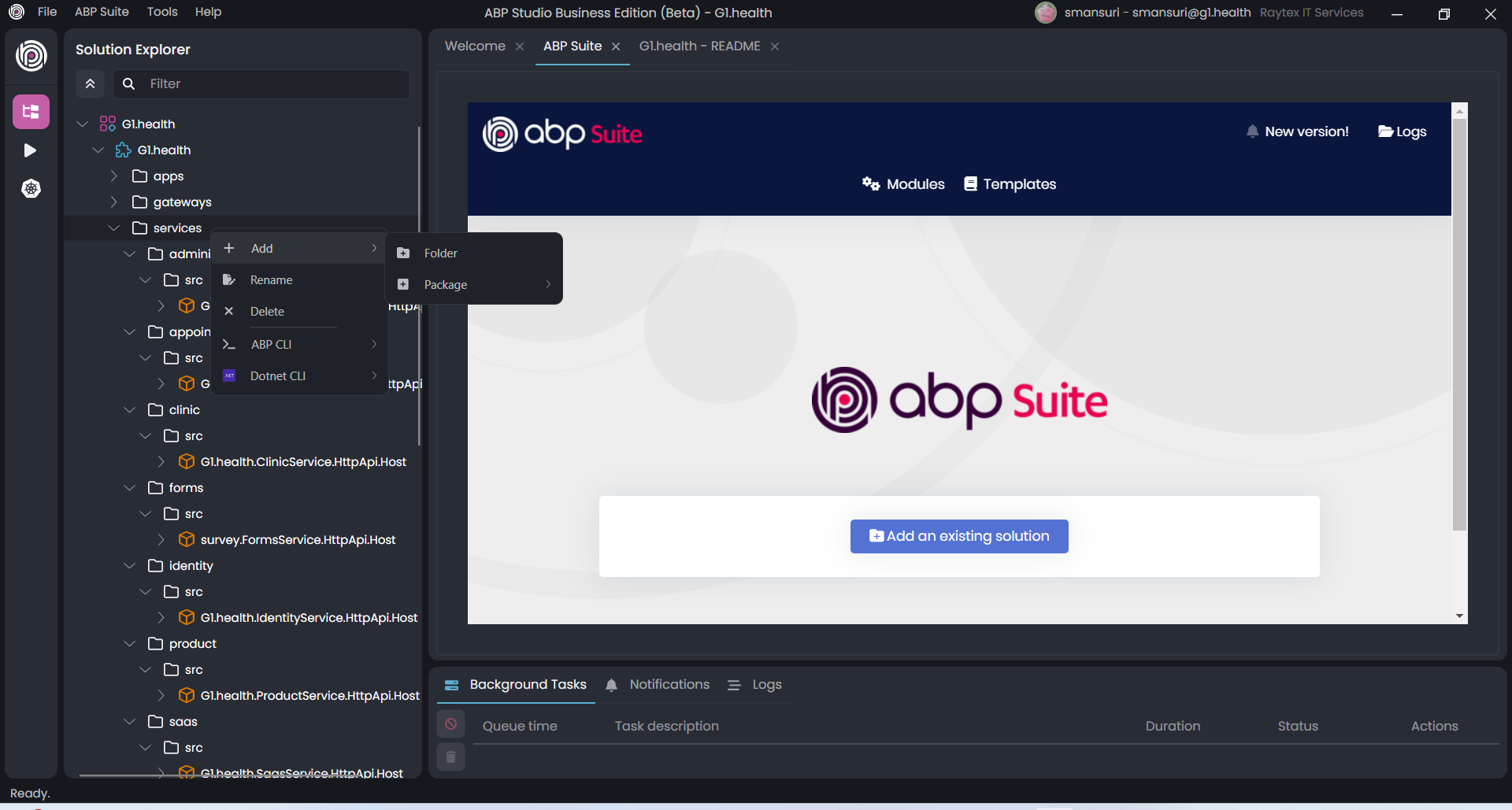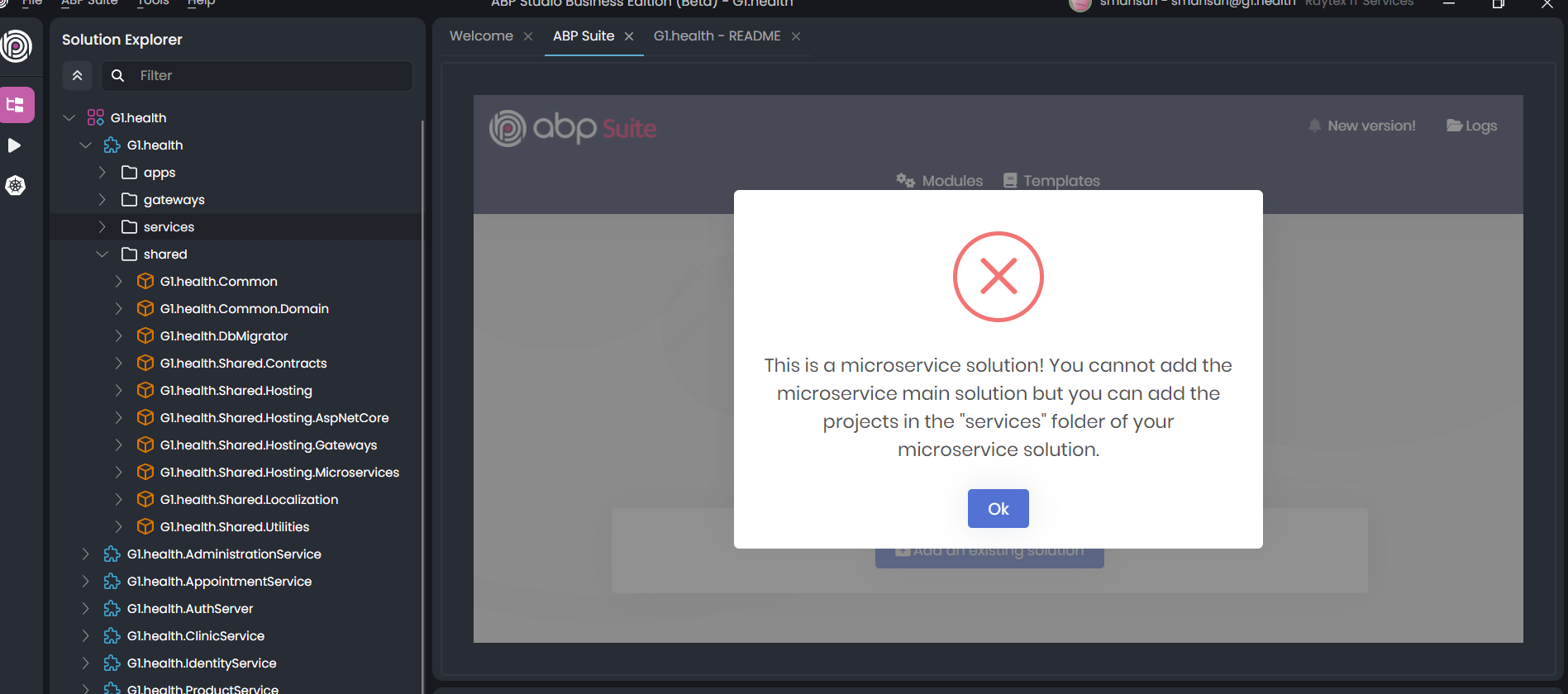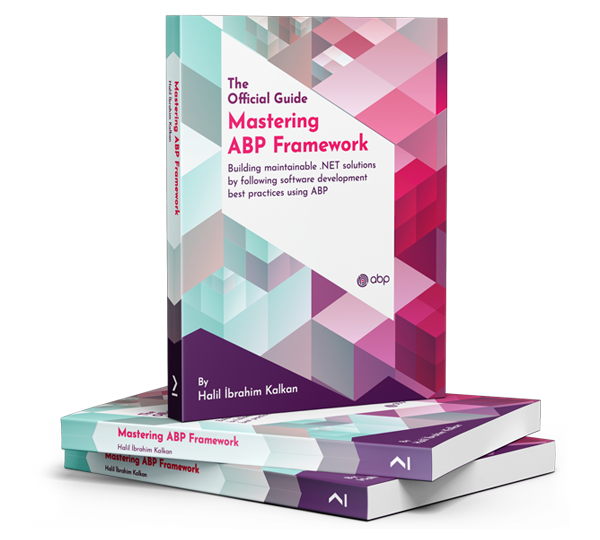- ABP Framework version: v8.2.1
- UI Type: Angular
- Database System: EF Core (MySQL)
- Tiered (for MVC) or Auth Server Separated (for Angular): Auth Server Separated (for Angular)
- Exception message and full stack trace: not getting option to add micro service
- Steps to reproduce the issue: open abp studio open existing solution right click on the services folder. not getting add module/micro services option under the menu
 while clicking on add existing solution getting below error.
while clicking on add existing solution getting below error.

Cli getting below error ; File already exists: D:\G1_Health\G1.health.gitignore Volo.Abp.Studio.AbpStudioException: Exception of type 'Volo.Abp.Studio.AbpStudioException' was thrown. at async Task Volo.Abp.Studio.SolutionTemplates.Pipelines.FileEntryListWriteToOutputFolderStep.ExecuteAsync( SolutionBuildPipelineContext context) at async Task Volo.Abp.Studio.SolutionTemplates.Pipelines.PipelinedTemplateSolutionBuilderBase.vgYjx4fcXZ( List<SolutionBuildPipelineStep> , object ) at async Task<string> Volo.Abp.Studio.SolutionTemplates.Pipelines.PipelinedTemplateSolutionBuilderBase.BuildAsync( SolutionBuilderContext context) at async Task<string> Volo.Abp.Studio.SolutionTemplates.SolutionBuilder.BuildAsync(SolutionBuilderContext context) at async Task Volo.Abp.Studio.Cli.Commands.NewSolutionCommand.ExecuteAsync(CommandLineArgs commandLineArgs) at async Task Volo.Abp.Studio.Cli.StudioCliService.RunInternalAsync(CommandLineArgs commandLineArgs) at async Task Volo.Abp.Studio.Cli.StudioCliService.RunAsync(string[] args)
14 Answer(s)
-
0
Hi @smansuri
It seems like your solution is created via old microservice template which is not compatible with ABP Studio.
We may suggest you to create a solution via new microservice template on ABP Studio, and continue your development with it if you can.
-
0
Hi @smansuri
It seems like your solution is created via old microservice template which is not compatible with ABP Studio.
We may suggest you to create a solution via new microservice template on ABP Studio, and continue your development with it if you can.
yes but we already migrated to 8.2.1 which supports new cli then why its not working.
-
0
New microservice template is different then the old one. It is not about the ABP Framework version, the solution architecture is different. It is not possible to achive all features of ABP Studio with the old template.
Also, ABP Suite is used only for code generation. I guess it is not related with the case.
-
0
How is that not related when you have compatibility with version 8.2.1. How do we migrate then existing template to studio template. what are the steps.
-
0
Hi @smansuri
Unfortunately we don't have a way to automatically migrate your old solution to the new microservice template. If you want to use the features in ABP Studio for microservice development, I think the easiest way is to create a new microservice solution and move your project's source code to the new project step by step.
-
0
Hi @smansuri
Unfortunately we don't have a way to automatically migrate your old solution to the new microservice template. If you want to use the features in ABP Studio for microservice development, I think the easiest way is to create a new microservice solution and move your project's source code to the new project step by step.
The issue im facing is that im not able to add a microservice using suite as old suite does not allow to load the whole microservice solution template as existing solution and abp studio either does not work as its old template. Problem with command line add microservice command is that it does not generate the angular project. I do not understand if the abp studio is still under beta version how could change the way abp suite works for existing templates. what about the backward compatibility for older version?
-
0
suite does not allow to load the whole microservice solution template as existing solution
You can add service by service. And then generate code on the services.
-
0
suite does not allow to load the whole microservice solution template as existing solution
You can add service by service. And then generate code on the services.
issue is it does not allow new service to be added.
-
0
Any update on this?
-
0
Hi @smansuri
Sorry for our late reply. I think what @yekalkan means, you need to do this in new microservice template. If you follow this approach https://abp.io/support/questions/8755/ABP-studio-not-able-to-add-new-micro-service-in-the-existing-solution#answer-3a180b89-76d4-b0ff-a534-dd45c2339225, you should be able to work on new microservice solution template.
Are you having this issue on new microservice template as well ?
-
0
Hi @smansuri
Sorry for our late reply. I think what @yekalkan means, you need to do this in new microservice template. If you follow this approach https://abp.io/support/questions/8755/ABP-studio-not-able-to-add-Wi new-micro-service-in-the-existing-solution#answer-3a180b89-76d4-b0ff-a534-dd45c2339225, you should be able to work on new microservice solution template.
Are you having this issue on new microservice template as well ?
with new micro service template i have seen the DDD layer is removed now. We already have a application developed using DDD domain and now you have remove the option to generate DDD layered from new template. So if we do not migrate to latest microservice template and if you introduce the new module like payments in future it will follow the new micro service template right? and what if we need to customize the features in the newly introduce module? how do we achieve this if we do not migrate to new template and only upgrade the abp version to latest version. And how am i supposed to maintain the source code of these modules in case in case if stop using the abp license?
-
0
The new modules will continue being DDD layered.
-
0
The new modules will continue being DDD layered.
Then why not provide a param in the add microservice command to use DDD layer solution or the new one which will be default while adding microservice?
-
0
The new modules will continue being DDD layered.
Then why not provide a param in the add microservice command to use DDD layer solution or the new one which will be default while adding microservice?
The reason behind this is in your microservice solution, it's more beneficial to go with our standard module template, which provides 3 layers. This allows you to still separate your interfaces and their implementations into different projects and re-use them. For most of the cases, this is more maintainable and easy to start with.
If you go with our old microservice solution template, then there is no problem, you can still use the DDD layered services, but this is a new way that we suggest to start with.
Regards.

























































